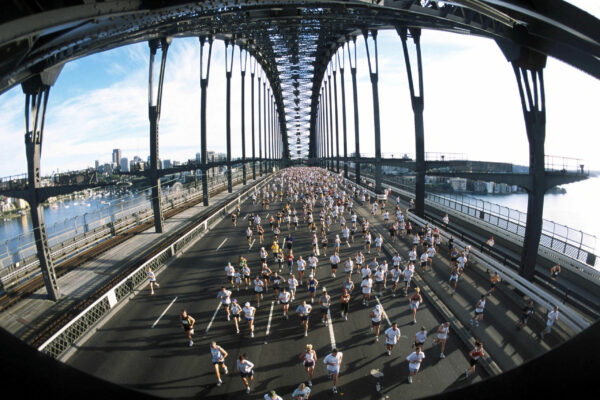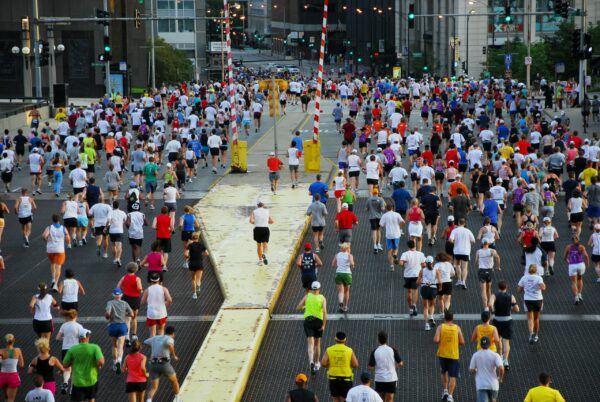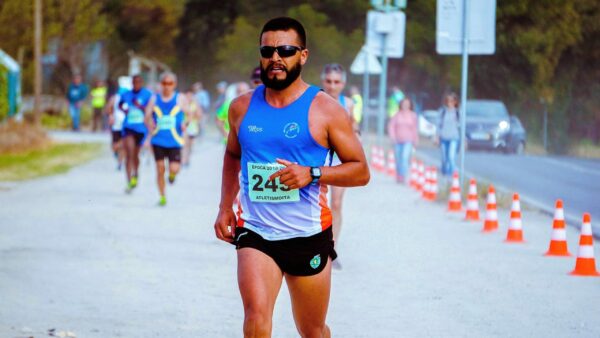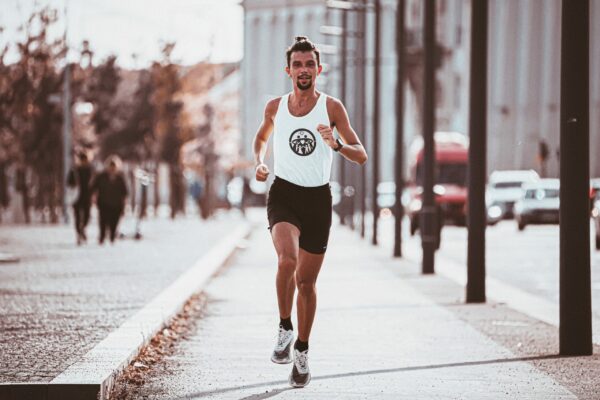Running is the simplest sport in the world, as you are not dependent on a fitness center other conditions or appointments with teammates to go for a run – you just need a pair of running shoes. This is probably why running- and marathon training has developed into one of the most common forms of training today. In how to prepare a marathon for beginners, we will explore this.
How To Prepare A Marathon Project

So, many runners are in the beginning fascinated by the simplicity of running. Since it only requires a pair of good running shoes and then you are ready to participate in the world’s largest fitness room, on the country road, in the city, in the woods or along the beachside.
However, most runners are looking for better results, and also some competitive momentum. This competitive momentum is for the most part aimed at themselves and their own performances. Only a few seek the challenge against others and become regular competition- or elite runners.
When running training must be targeted and structured, there is, in particular, a training principle that stands out and which you should take as a starting point when planning your training. This principle is that training is specific. You become good at what you train in and therefore you have to run if you want to get better at running. The central organs such as the heart and lungs all respond equally to aerobic exercise.
The heart gets bigger and blood volume grows. On the other hand, the local changes in the muscles will respond to the specific impact. A rower becomes stronger and better in the specific muscles used for rowing and the same is the case with the runner. If you know that you in a certain competition, will run a lot in hills, it is also necessary to train in running in the hills. If you only train on a flat route, you will have great difficulty keeping pace with those who have trained specifically for running in hilly terrain.
The 5 Key Elements When You Train Marathon

The foundation of running training is simple: it is to develop enough endurance to be able to maintain the necessary speed at the entire distance you want to complete- or compete at. The training content for the different distances is basically the same, and the training is based on five key elements:
- Endurance training (LSD)
- Training of the lactic acid threshold
- Training of oxygen uptake
- Basic speed training
- Recovery training
How the training content should be weighted depends on several factors. In addition to the distance you train to, the individual conditions have a central place. The difference in training to run a 5 km distance and a marathon lies in the mutual use of the key elements.
When our aim is marathon training, the long runs LSD in easy/moderate pace (endurance training) are the cornerstone. However, this does not exclude lactic acid training and oxygen uptake training, which is run as interval training. These aims are more against boosting your speed so you can run faster on long distances. Endurance training stimulates your fat burning and makes you a cool ‘diesel engine’ that can keep running where you previously had to give up.
How To Prepare For A Marathon – The 3 Key Factors
Particular three factors need to be emphasized when we prepare our training for a marathon.
Oxygen
Is the body’s ability to absorb and utilize oxygen – training of oxygen uptake. Oxygen is the limiting factor for how much energy the body can produce.
The better the body is at absorbing and utilizing oxygen, the more energy it can produce and the faster you can run. The term we use for your body’s ability to absorb and utilize oxygen is known as fitness. A well-known term for good fitness is fitness rating, which is defined by how much oxygen you can absorb per minute concerning your weight – milliliters of oxygen per kilogram of body weight/minute.
To train your fitness you need to run fast, as in e.g. interval training. When we perform fitness training, the energy your body produces will mainly come from the carbohydrate depots stored in muscles and the liver.
Endurance
The longer you run, the more important your endurance. Especially in a marathon race, perseverance is crucial to whether you succeed or fail. Endurance is also an expression of how good your body is at burning fat. Fat burning is very important, especially on the longer distances where you otherwise risk emptying the carbohydrate depots. If they are only emptied after approx. 1½ hour is forced on your body to run on fat burning.
Fat depots are so large that you can run for a week before they are depleted. Therefore, if your body is good at burning fat, you have an almost inexhaustible source of energy. And that means you can complete a marathon at a relatively high pace from start to finish without going cold. You train your fat burning when you run long and slow as Arthur Lydiard’s definition: Long Slow Distance LSD in easy/moderate pace.
Running economy
Which is an expression of how good your body is at using energy for propulsion. Just like we say about a car that drives 33 km/liter of fuel has a good fuel economy. If you do not run properly you will not utilize the body’s energy optimally and this results in a poorer running economy. You improve your running economy in particular through hill training and stair running with high knee lifts.
The biggest benefit and improvement for your health and shape that you can achieve as a beginner is to train your endurance, by running long slow runs at an easy to moderate pace. You improve your ability to burn fat, which also causes you to lose weight. At the same time, these LSD runs are healthier and more gentle on your muscles, tendons, joints and bones, which give them the time they need to develop the necessary strength for the greater loads that may come in the future when you choose to switch to a more intensive form of training. So that means long-term improvements with a lower risk of injury.
Slow To Moderate Training Wins When You Prepare For A Marathon

It’s not a good idea, in the beginning, using high-intensity exercise programs with great strain on the body and high risk of injury, the best solution is to focus on systematically building the shape so you strengthen your physiology and especially your tendons, which are the weakest parts of the body when it comes to running. You can follow the basic program here and the specialization program here.
Your training pace
As an inexperienced runner, it can be difficult to find the right running pace. It is particularly important to be aware of the pace when you start running or start putting extra miles into the program. If you are not used to running, you can easily run too fast. From the start, you may also want to show that you can keep up with the other runners on your route and this means that you perform beyond your current ability.
At the beginning of the training course, your legs are more vulnerable, this approach will increase the risk of injury, therefore you must find a suitable pace for you and your current level, which is not too fast.
Finding the right training pace
Run at your talking pace. If you can have a conversation without gasping for breath while running, then you have found the right pace. The ability to speak indicates that your muscle cells have not reached a level where they gasp for oxygen. A very useful tool for finding your perfect pace is the Borg scale.
Run with a training partner
Here you can also use the speech tempo as a measure of whether the tempo is appropriate. You can also consider joining a running club or maybe you can find a few colleagues at work to run with after work, as I did and where we ran in green areas around our workplace. Often there are also experienced runners who have a good sense of pace-setting so everyone can keep up.
Run with a heart rate monitor
With an HRM you can set your personal training zones, which give alarms when your chosen training zone is exceeded. Today, almost all watches have GPS built-in and where you can upload your training data online by using ex. Garmin Connect or Strava etc. after the run and analyze your pace, heart rate, and much more if it interests you. This also means you can use these opportunities as a training diary, where you note a lot of things as needed in the cloud. The preferred training zone should be between 65 – 75% of the heart rate reserve as a beginner.
It is a good idea to run at a steady pace all the way from the start to the end of your training runs. When you run this way and hit just the right pace, you are also training your inner sense of pace-setting and this is a very important trait when you run a marathon. It will particularly be tested since such a big event as a marathon race with a lot of spectators and runners can disrupt your rhythm and make you run too fast.
Marathon Training Improves Your Physiology

When you run, happens a gradual transformation of your body and it is not just the waist that gets narrower, because running increases your metabolism. In fact, there are huge improvements in especially heart and lung functions, as well as in tendons and muscle cells.
The heart is the motor in the body’s circulation system and when you run, the heart has to work harder. It makes your heart stronger and increases its stroke volume. This allows it to pump more blood out to your muscles, which improves and strengthens your shape. At the same time, you get a lower resting heart rate because your heart beats fewer times when you relax. This means that the workload of the heart at rest is reduced and it improves your health.
When you run you will also strengthen your lungs and respiratory muscles. You develop more branches in the outer part of the lung tissue, which means that you can absorb more oxygen, which together with the increased blood volume, can be sent out to the muscles. Besides, strengthening the lungs prevents the risk of lung diseases such as COPD later in life.
Blood circulation and muscles
The blood circulation also becomes stronger and healthier. Running training increases the flow of blood in your veins, which means that more oxygen can be transported to the muscles. In the muscles, your blood circulation is also improved. Running training increases the branching of small blood vessels the so-called capillaries, which means that more blood and thus more oxygen and nutrients can be transported to the ‘outer corners’ of the muscles, which gives the body a better fuel supply and this can be seen in your running times.
Running training also strengthens your muscle’s ‘Power stations’, which are the muscles’ small combustion engines (mitochondria). Their number and size increase. This is where sugar and oxygen are converted into energy. Better oxygen supply and more mitochondria mean that more energy is produced and thus also faster running times.
Prepare a marathon with Interval training

The most fundamental trait as a long-distance runner is your endurance. If your endurance is good you have an ‘engine’ that can keep you running all 42 km in a marathon. But you can still boost your endurance using endurance intervals.
1) The endurance intervals stimulate as the name suggests your endurance and that is as I said the most important trait as a long-distance runner. Also, the intervals are healthier for your legs than sprint and fitness intervals. The endurance intervals are associated with a significantly lower risk of injuries, as due to the structure of the intervals you will never push the body all the way up in the red field.
2) You will also recover faster after the endurance intervals, as you do not push the body to the maximum and therefore will not accumulate such high concentrations of lactic acid in the muscles. Lactic acid is formed when the muscles do not get enough oxygen and contribute to prolonging the recovery time with the result that it takes a longer time before your body again has a surplus to run.
3) It is for most runners more motivating to do endurance intervals than the hard fitness intervals. When you train endurance intervals, you are not going to push your body out where it hurts. It makes endurance intervals more affordable.
Long Intervals
The way to run endurance intervals is long intervals with a short break. A rule of thumb is that every time you run for 3 minutes you should jog or walk for 1 minute. The short breaks mean that you do not get so much surplus that you can push your legs up to maximum speed. You will instead work a little below your limit. The advantage of this is that there will be no mismatch between the oxygen uptake in your circulation and the oxygen consumption in your muscles. In other words, you will not form so much lactic acid and therefore recover faster for the next interval.
Endurance training and lactid threshold
When you run endurance intervals, it is about staying close to your lactic acid threshold without exceeding it. Your lactic acid limit is the pace at which the body can accurately absorb enough oxygen so that it does not begin to accumulate lactic acid in the blood. If you increase the rate above this threshold, the concentration of lactic acid in the blood will increase.
One method of finding your lactic acid threshold is by using your heart rate. Your threshold is between 80 – 85% of your heart rate reserve. Your heart rate reserve is the difference between your maximum heart rate and your resting heart rate. You can use my article about training zones to find your lactic acid limit and fill out a personal scheme for your training zones. Your maximum heart rate can also be calculated from the formula 208 – (0.7 x age). You measure your resting heart rate best in the morning just when you wake up. The heart rate reserve is your maximum heart rate minus your resting heart rate.
Final Thougths
Conducting a marathon is something most people can achieve with the right training and a gradual build-up of capacity. It is about finding the right individual roadmap for the successful completion of the first marathon. The running activity in its simplicity can be done almost anywhere and at any time and it is one of the cheapest sports available. Once you have found a good pair of running shoes, you are pretty much ready to start the journey.
I hope you get something out of this post and if you have any questions about the topic or want to leave your own Personal review, please leave a comment below.
[faq-schema id=”3443″]






Thank you for this highlight, I have always known that our endurance and body’s ability to us up oxygen is a factor when it come to running but never knew of the body’s economy. I appreciate the fact that I can improve this by hill training and stir running. This will be a good one for me this week. thanks
Hi Parameter
Thank you for the comment. Happy that you can use some of it. By hill training, you also become stronger, since you recruit other muscle groups due to the ‘unfamiliar’ variation and the increased physical load.
Be Well
Sporting events are very good and at the same time can be flopped at easily so it is very important that we have an idea of what we are going into before planning. Preparing a marathon is not something that is so easy, it has a lot of departments as a project which you’ve been able to explore here, thanks.
Hi Shavo
Thank you for your comment. Yes, you need to have an idea of what you want, before taking action and then make a decision to do something about it. The best start in my opinion is to plan ahead, so you can see the challenges in advance. Happy that you could use some of it.
Be Well
Hi there!
Thats an awesome guide you provided there. Reading through it also appeared like a source of motivation to peiple who are new to marathon race and might feel they aren’t doing well. I love this article because it is very helpful to anyone who wants to begin the marathon game to understand the basic factors they have to be conscious with. This piece is really a great one.
Thanks
Hi Caro
Thank you for the comment. Happy that you find it helpful and that you mention being ‘conscious’ about the basic factors since it’s always the best start when beginning something new.
Be Well